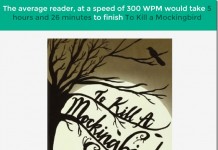 One of the biggest frustrations of the lack of a Universal Consumer Format is that the diligent techie volunteers at the Open eBook Forum have come so close. Add the wrapper to house the various files, do the DRM and the rest. Then you’re tantalizingly close to letting people read e-books without having to clutter up their handhelds and desktops with software for every bleepin’ proprietary format.
One of the biggest frustrations of the lack of a Universal Consumer Format is that the diligent techie volunteers at the Open eBook Forum have come so close. Add the wrapper to house the various files, do the DRM and the rest. Then you’re tantalizingly close to letting people read e-books without having to clutter up their handhelds and desktops with software for every bleepin’ proprietary format.
 The pseudonymous NetWorker, a rather high-profile technical type in e-book circles, has chewed me out for not emphasizing how close we are to nirvana. In fact, it’s to the point that a UCF from the OeBF essentially exists by techie rules since it’s trivial to do a wrapper and the rest. And I appreciate his perspective that the problem isn’t lack of a UCF but the OeBF’s failure to promote it as such.
The pseudonymous NetWorker, a rather high-profile technical type in e-book circles, has chewed me out for not emphasizing how close we are to nirvana. In fact, it’s to the point that a UCF from the OeBF essentially exists by techie rules since it’s trivial to do a wrapper and the rest. And I appreciate his perspective that the problem isn’t lack of a UCF but the OeBF’s failure to promote it as such.
Still, to me, nothing will matter until a true UCF is out there, ready to go and in use. A UCF by any definition will hardly be catnip to the format-stymied nontechies if it isn’t in use with all the trimming necessary for Jane Book Buyer to enjoy it just like a standard CD or the old LP records. Oh, and the “Jane” isn’t just a concession to PCisms. Romances and other female-oriented books are a fast-growing category within e-bookdom. Here’s to the idea of a Harlequin Romance or a Deborah Smith romance, not a Microsoft Romance or Palm Digital Media Romance–which all too often is how book buyers must think. Talk about the toxicity of the eBabel for e-book sales!
Meanwhile I’ll continue to link to Jon Noring’s UCF article even though he notes that some details are a tad out of date, what with him and other OeBF experts having refined their ideas. For the moment the powers in the OeBF remain pretty deaf to the need for a genuine, consumer-ready UCF. But at least a little hope has come with news from Lee Fyock–of Palm Digital Media–saying that Palm eBook Studio can now “read a .opf file and pick up the spine/manifest and Dublin Core metadata.” PDM is still flouting the spirit and intent of the OEBPS specification, but at least it can import some of the content of an OEBPS Publication and massage it in a proprietary way.
PDM’s small but encouraging step
NetWorker, the tech guy mentioned earlier, says: “This capability is currently undocumented, but in my mind it is the most significant information that has appeared on the eBook Community list in the past year. This is clear evidence that Palm Digital Media recognizes the importance of the OEBPS, and is one more small step to the complete acceptance of OEBPS as a uniform consumer e-book format.” Well, fingers crossed! Oh, and if people want to follow NetWorker’s example and say “uniform” rather than “universal,” that’s fine with me. I myself can see many formats coexisting, while the UCF justifies itself economically. Smart publishers will be sick and tired of having to cope with the Tower of eBabel, and in the end right will be might.
But back to the issue of building a truly finished UCF–and what it should be able to do. One of the key capabilities, as Jon Noring has pointed out, should be ways to display virtually all typographical possibilities that arise in p-books. Wouldn’t it be great, for example, to be able to see rivers of text flowing in just the right places amid the illustrations in a colorful electronic edition of Alice’s Adventures in Wonderland? SVG technology could make this happen–even on small portable devices, perhaps powered by Linux–and I would recommend a new item just out in OS News headlined SVG and its Path into the Linux Desktop. This is an XML-standards-based technology. It can work well with proprietary products, too, not just the nonproprietary variety–which, ironically, may be one reason why even Adobe, one of the biggest trogs in the format wars, is now offering an SVG plug-in and pushing SVG as the “future of Web graphics.”
The glories of SVG
SVG lets the same graphic nicely scale up and down–without the usual image deterioration–for use on anything from a tiny mobile phone screen to a display the size of a big-screen TV. It is platform-independent. Adobe’s SVG Viewer is multiplatform including RedHat Linux and Solaris, as well as MacOS X and, of course, Windows.
With its animation capabilities, SVG could even be a Flash Killer. Imagine all the possibilities for animations in e-books, whether for education or entertainment or maybe kids’ books mixing both. Needless to say, like Adobe, Macromedia is watching this technology very carefully. SVG, moreover, could also replace PowerPoint for slide presentations.
Besides SVG, MathML is another standard to consider for use with a UCF. MathML does what it says and allows you to reproduce math equations with more accuracy and less fuss than you would without this wrinkle. You can get the latest free MathML plug-in for Internet Explorer 6 from Design Science. Also check out the MathML demo suite from Design Science.
Together, as Jon sees it, “XML+CSS+MathML+SVG will pretty much handle over 98 percent of what PDF provides for online viewing.” No wonder the OeBF, dominated by Microsoft, Adobe and Palm Digital Media, so far seems to be about as comfortable with the idea of the aforementioned combination as the Redmond boys are with Linux.
Detail: OPF or .opf, short for an OEBPS Package Document File, is the “nerve center” of an OEBPS Publication, which includes one or more document files and optionally such extras as style sheets, images and multimedia. OEBPS is an OeBF-recommended specification and means Open eBook Publication Structure.

































